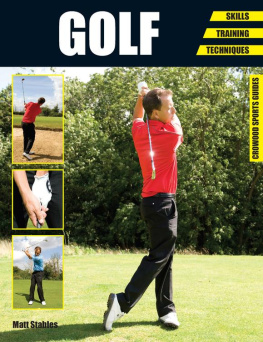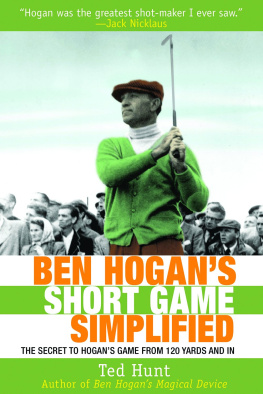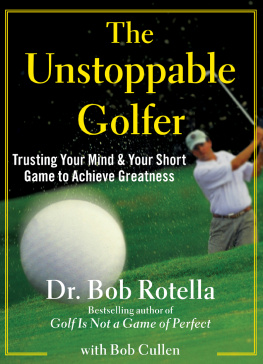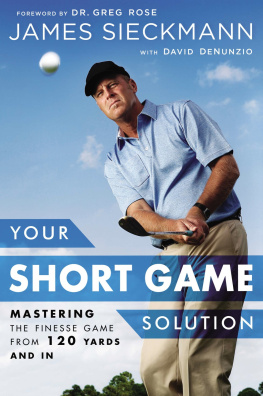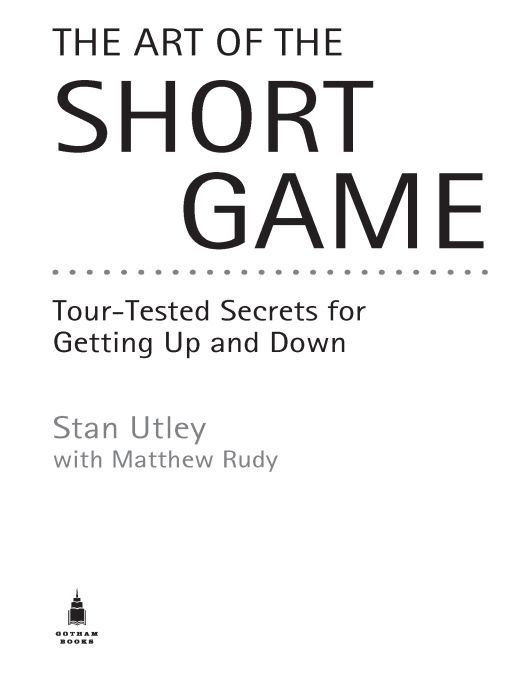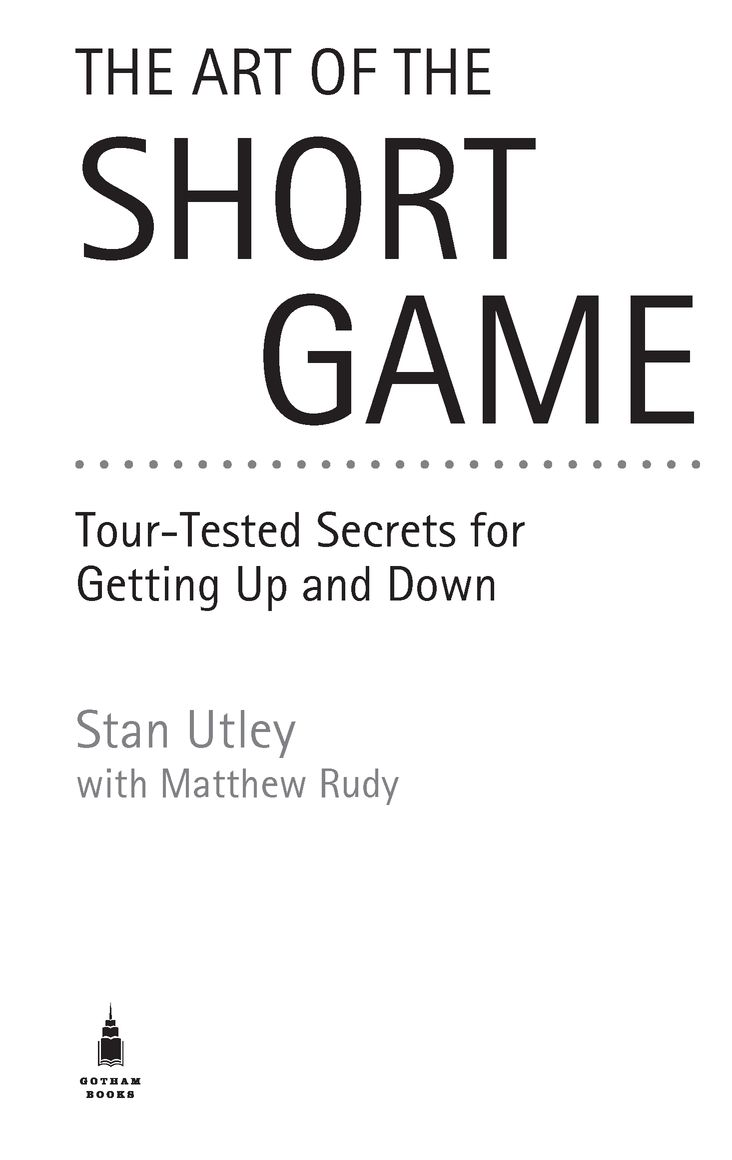Table of Contents
FOREWORD
by Peter Jacobsen
Jay Haas has been a friend of mine for a long time, and early in 2003 we were paired together at the Buick Invitational in San Diego. Jay was really excited about his game, and had a lot of great things to say about the putting and short-game work he had been doing with Stan Utley.
At that point, I had been headed toward becoming a part-time player on the PGA Tourboth because my outside business interests started taking up a lot more of my time and because I simply wasnt scoring as well as I wanted to. I was hitting the ball as well or better as I ever had, but my pitching, chipping, and putting just werent competitive. I played twenty-one tournaments in 2002 and made just under $400,000.
Still, the Champions Tour was a year away, so I knew I wanted to keep working on my game. Jay watched me hit it good but struggle for two rounds and miss the cut in San Diego, and he suggested that I give Stan a call. Stan cleared his schedule, and I went over to Scottsdale for a day to hear what he had to say.
Im really glad I made that trip.
What Stan says about the short game makes sense. It matches what I had been working on in my full swing with my teacher, Jim Hardy, and Stan has a simple, no-nonsense way of getting his points across that clicked with me right away. We made some changes in my putting stroke, but the biggest overhaul came in how I pitched and chipped the ball. I had always made my money on the PGA Tour with my ball-striking skills. After a few hours with Stan, it was if I had a whole new golf gamefrom 50 yards in.
One of the first things you learn as a tour player is to expect any changes youre making to your swing to take some time to feel comfortable. I was prepared to work at what Stan showed me before I saw results in my scores, but it didnt take long. Within a couple of months, I had back-to-back top-10 finishes at Harbour Town and the Houston Open. But the best was yet to come, in July.
In Hartford, I shot 63 in the first round and led from start to finish, winning my first PGA Tour event since 1995. Its always a thrill to win, but doing it at age forty-nine, when you think your next chance wont be until the Champions Tour, is really special.
Coming down the stretch, I had a one-shot lead and was facing a pitch shot from the rough on the 15th hole. Using the technique Stan taught me, I hit it to three feet and made the putt. It was the shot that won the tournament for meand one Stan will show you how to hit in Chapter 5.
I joined the seniors in 2004 and was fortunate enough to win the U.S. Senior Open in my first try. My putting, pitching, and chipping is so much more solid now thanks to Stan, and hes actually helping me have to make some tough decisions about how much time to spend playing golf and how much to devote to my off-the-course work.
What does this mean for you? Its simple. Stan knows how to help you get better at the shots you use more than any others during a round of golf. Thats the quickest and best way to lower your scores. And he knows how to help you feel confident over the shots that used to make you nervous. I know he did that for me, and Ive been playing professionally for more than thirty years now.
So listen to what Stan has to say here. Youll enjoy the game so much morealthough the guys you take money from in your regular game might not appreciate it quite as much.
Good luck.
PETER JACOBSEN
Seven-time PGA Tour winner, two-time Champions Tour major winner
Portland, Oregon
September 15, 2006
FOREWORD
by Rob Akins
Years ago, when I first moved to Memphis, I was teaching at a local driving range. As I gave my lessons, I noticed a gentleman sitting on a bench behind me, watching me teach. He never said anything, but hed come back every few weeks and sit in the same spot. After a few months, I finished my lesson and walked over to him and introduced myself. It was Frank Utley, Stans father.
Frank Utley told me he worked for the railroad, and he often had eight or ten hours to kill in Memphis before getting back on the train to go back home to Missouri. He had a couple of sons at homeStan and his brother Johnwho played golf, and he was really into the game himself. Through Frank, I started teaching John, and pretty soon after that, I met Stan. We hit it off right away, and Ive been a teacher and caddie to him, but Ive been most fortunate to call him my friend.
Whats been amazing for me as a teacher has been to watch Stan do things that are so far above and beyond normal, both as a player and a teacher. As a tour player, Stan was challenged by not being able to hit it very far. He never hit it much more than 245 or 250 off the tee. He had to chip and putt way above average just to compete, and he did that. He played more than ten years on tour, and won the Chattanooga PGA Tour event as well as three Nike Tour events. The pressure was always on Stans putter and wedges, but he always believed in his talent and that he could get it done that way. I have so much admiration for him and his will to succeed.
Stans liabilities in terms of power really pushed him to be great with the putter and wedges. He learned how to use his mind, and he showed me how powerful visualization can be in this game.
I had been teaching Stan for several years when we decided that Id caddie for him at some Nike Tour (now Nationwide Tour) events in the summer of 1995. The week before we were going to get together, I looked in the paper Sunday morning and saw that Stan was in the middle of the pack at the Nike Louisiana Open. The phone rang, and it was Stan. He told me he was shaving, because he wanted to look good in the pictures they took of the tournament winner. Stan had just gone to see a presentation from Tony Robbins and had literally walked over hot coals in a confidence-building exercise. The experience had really made an impression on him. I tried to think of a nice way to point out that he was pretty far behind, but he told me that a hurricane was coming in from the Gulf and he was going to walk on fire.
Stan has always been an incredibly positive person, and a person of deep faith. I kind of wrote off what he was saying that morning as Stan was pumping himself up. I went out fishing with my boys that day and didnt think much more about it. That night, the phone rings again, and its Stan. He said he was out celebrating (which, for him, was ordering a Grand Slam at Dennyshes a man of simple tastes). In howling wind, Stan went out and shot 62 to win the tournament by two shots over Keith Fergus. Only a handful of people broke par that day, but Stan said he walked on fire.
Later that year, Stan took some time off when his daughter was born. He told me he was really concerned where he was on the Nike Tour money list, because they didnt give out as many cards for the PGA Tour as they do now. We talked about it, and he decided that he needed to go out and win again to take the pressure off, so he could spend more time at home with his wife and daughter. So Stan went out there and won the Miami Valley event by seven shots. He just decided he wasnt going to miss, and he only missed a few inside twenty feet for the week. He almost didnt worry about speed, because he knew it was going in the hole.
I was caddying for him at another event that summer when he pulled a shot badly into a greenside bunker. Instead of getting upset, he told me that that might be where he was meant to play the next shot from. He holed the bunker shot out. I use that story with the tour players I teach to emphasize how important concentration, calmness, and focus is to playing golf. I learned those lessons from Stan.


